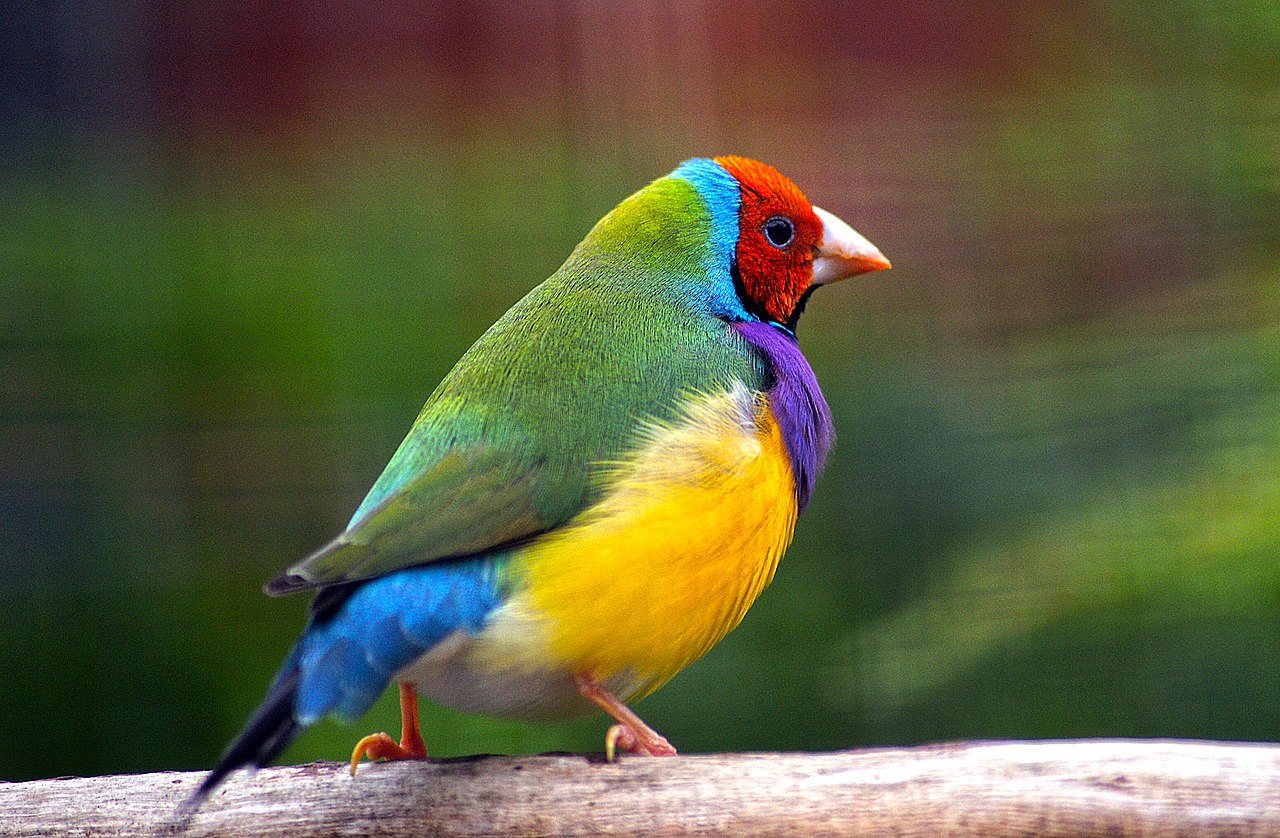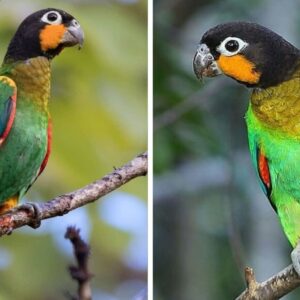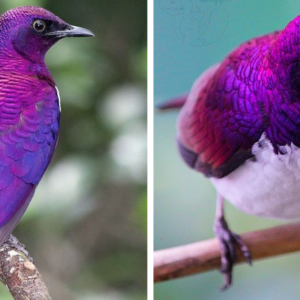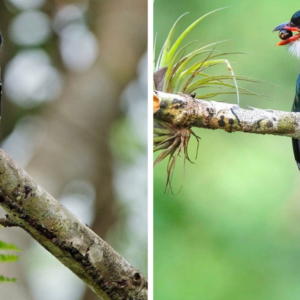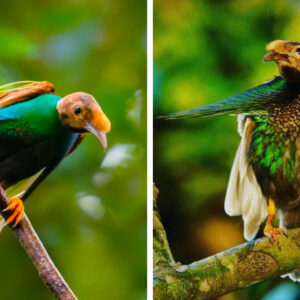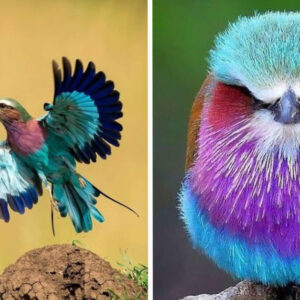This is the rainbow finch.
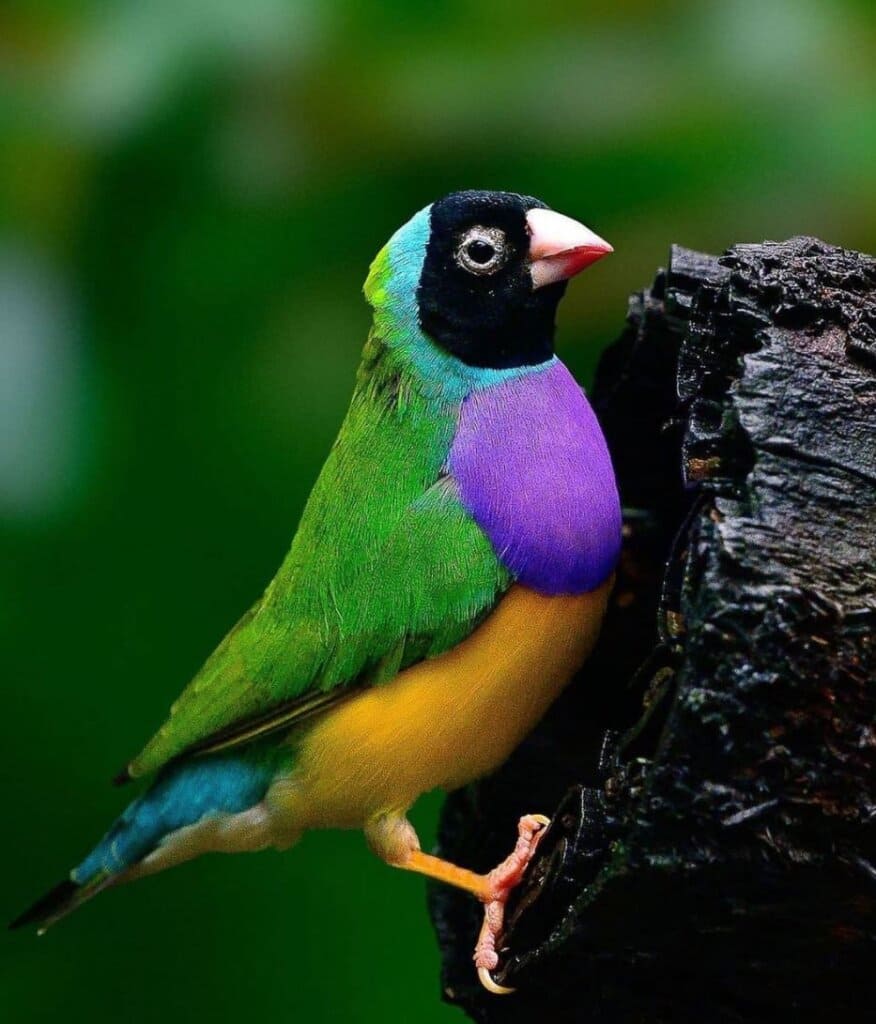
The Gouldian finch (Chloebia gouldiae), also known as the Lady Gouldian finch, Gould’s finch or the rainbow finch, is a colorful bird species that belongs to the Passeriformes order. It is an exclusive bird species of Australia.
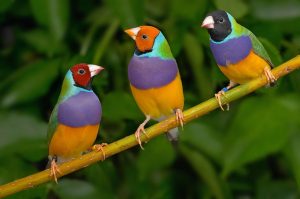

The Gouldian finch is famous and prized primarily for its spectacular plumage. Interestingly, both male and female birds are all brightly colored, while it’s only male birds in many other species.
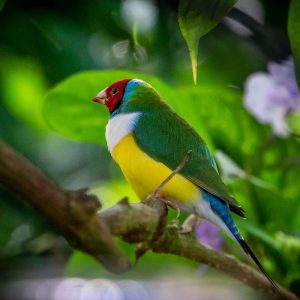
As their name suggests, rainbow finches can be of any color like a rainbow. They appear naturally in red, blue, green, yellow, etc. Additionally, selective breeding can create some striking color mutations such as “dilute” and silver, diversifying the appearance of these birds.
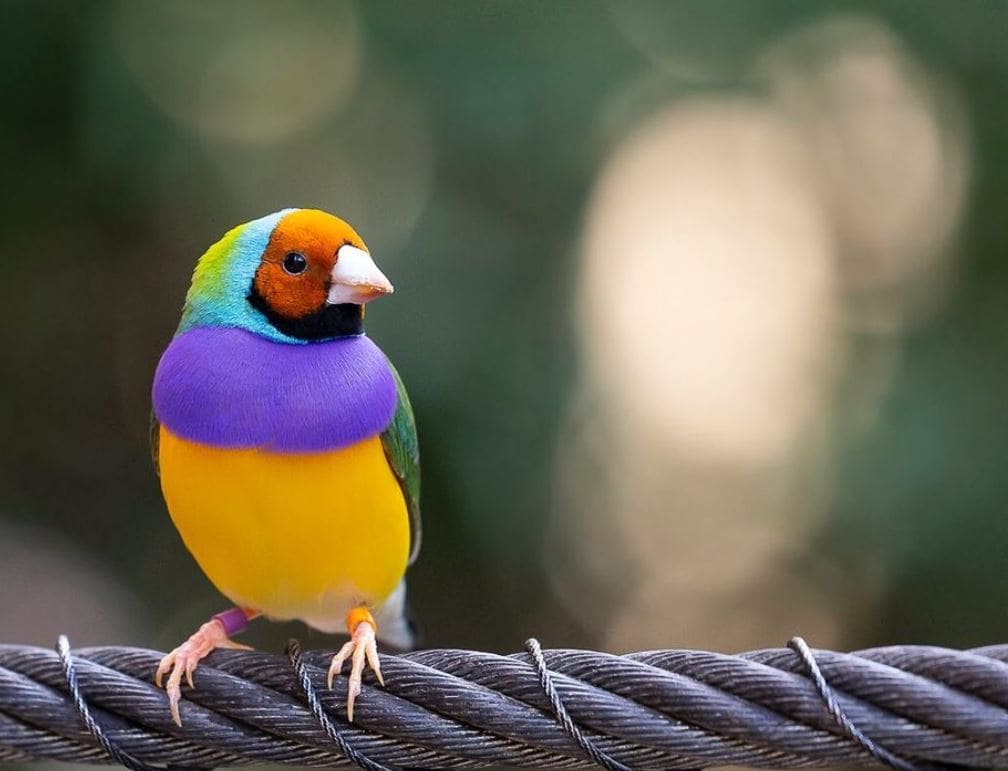
A rainbow finch is typically measured at 4.7 – 5.9 inches in length and 0.49 – 0.53 oz in weight. The fact that they are small birds can not prevent them from winning the spotlight. The Gouldian finches existing in the wild normally have a red, yellow or black head; and these birds are commonly differentiated in name by this feature. In their native habitat, most of the Gouldian finches have a black head. The number of birds has a red head is quite small and even smaller with orange head, about 1% only.
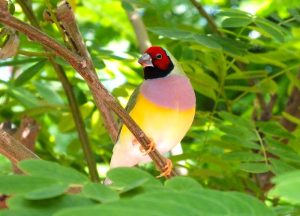
Other parts of their body also have many colors, typically with green back, black tail, yellow belly and purple chest. The male birds are brighter in color compared to their female counterparts. One distinguishing feature between the two genders is that the color on the male’s chest is purple, while it’s lighter mauve on the female’s.
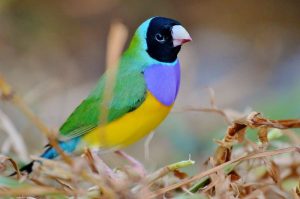
The Gouldian finches usually build their nests in tree holes. Their breeding season matches the beginning of the dry season when the food sources are abundant. When they mate, the male birds will start courting the female, showing his gorgeous colorful feathers in a set of dances. Normally, bright colors are evidence of good health.
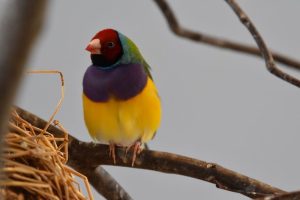
After mating, the female will lay a clutch of about 4-8 eggs and then brood them. Both parents will take turn to brood in the daytime, but when the night falls, the female will stay on those eggs. When the eggs hatch, both parents take care of the chicks.
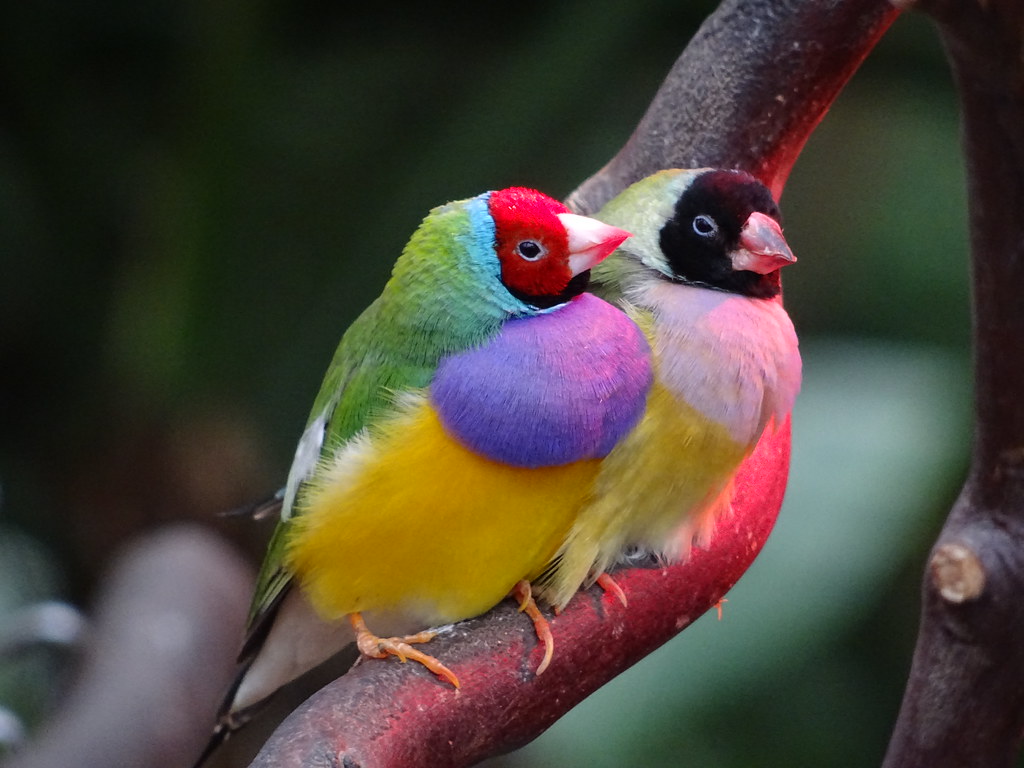
https://levanews.com
